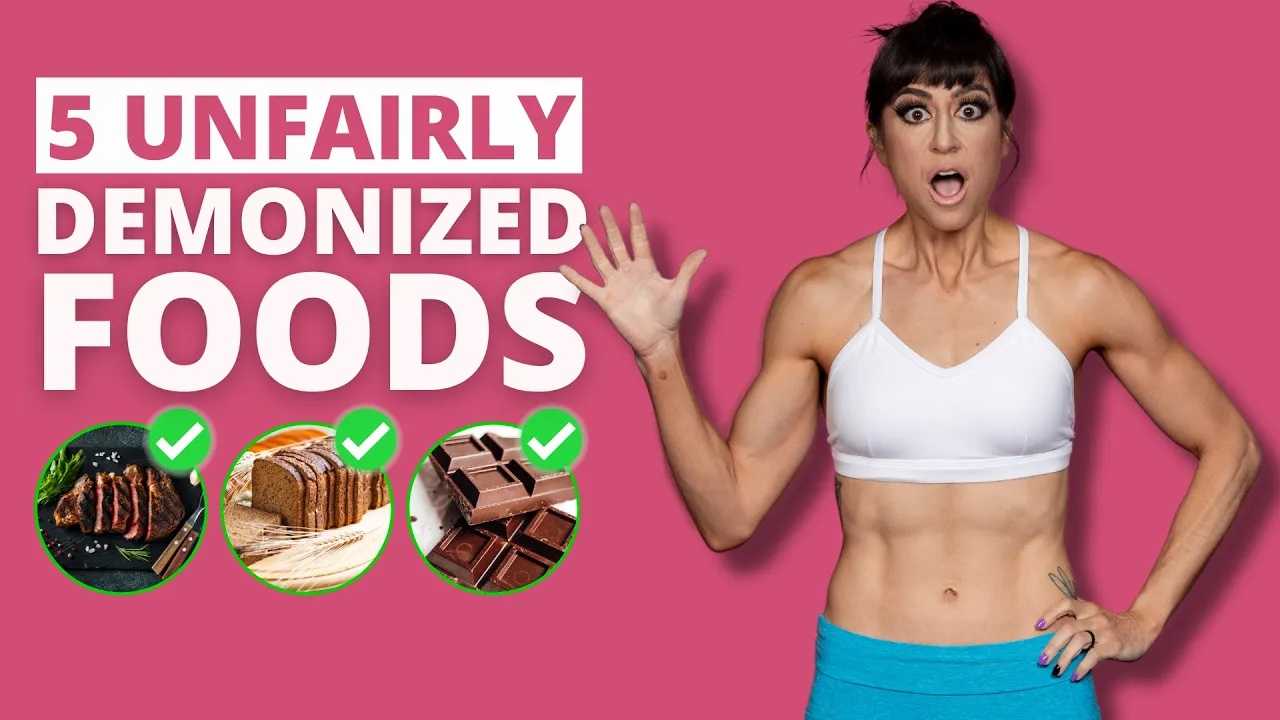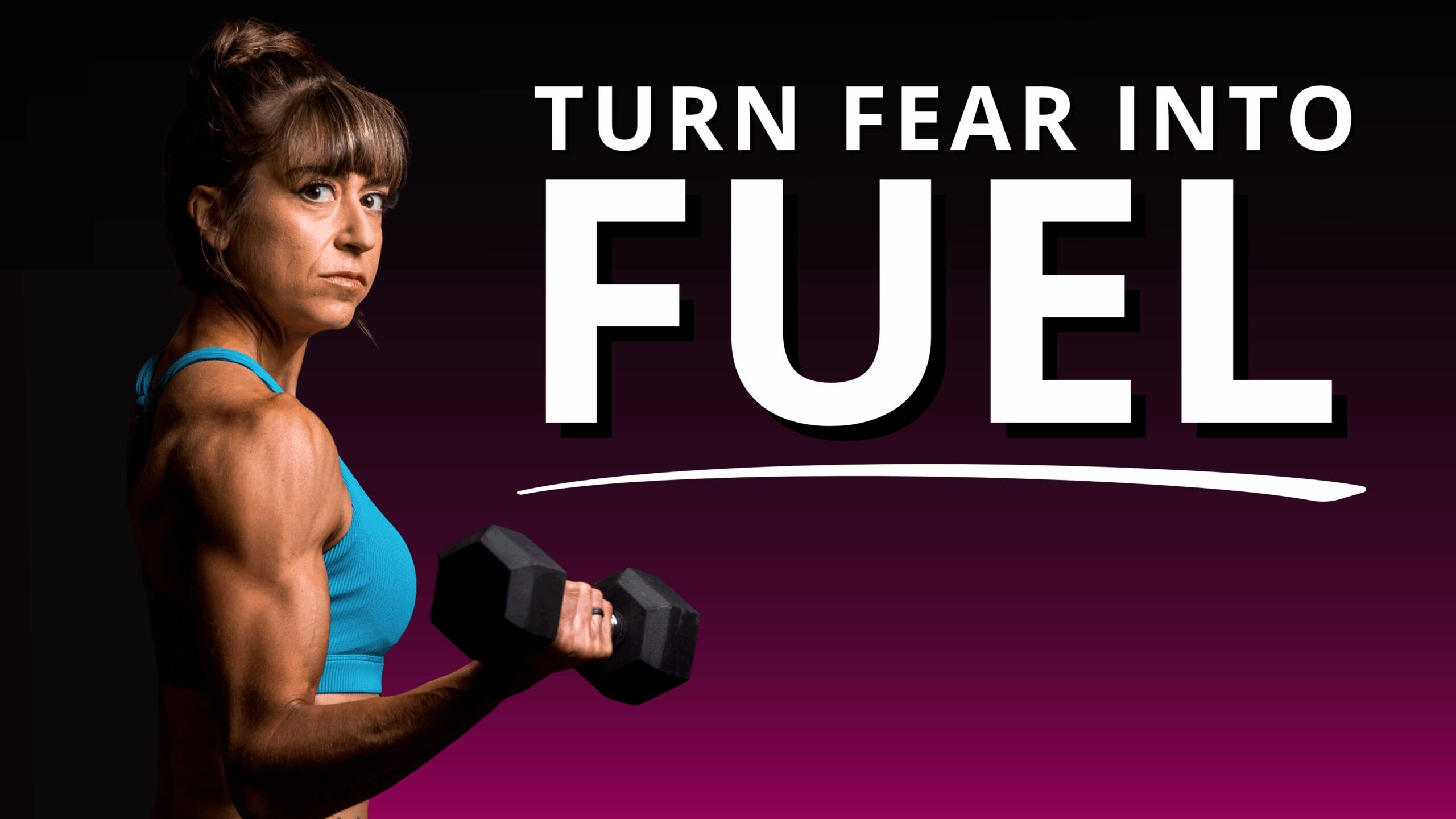STOP labeling foods as “good” or “bad.”
First off, foods do not have any moral value and assigning them one onlyends up making us feel guilty for eating specific things.
And that guilt is often what truly sabotages our results and prevents us from creating sustainable habits and lifestyle changes.
Because foods are NOT just healthy or unhealthy….as much as we want to put whole, natural foods on a pedestal and demonized processed foods.
And what foods are right for you may be different than what foods are right for someone else.
Every food has upsides and downsides to it – both benefits and risks.
That’s why I wanted to share the UPSIDES to 5 foods we often don’t see as healthy and that we should cut out from our diet if we want to lose fat!
(Want to learn more about the foods you need to reach your goals? The Dynamic DNA Nutrition Test)

The first food I often hear people say they need to cut out, yet crave sooooo much, is…
CHOCOLATE!
I can’t tell you how many times I’ve heard something like…
“I struggle to lose weight because of those chocolate cravings, especially at night…they get me!”
Well I’m here to tell you something amazing…
You don’t need to cut out chocolate to see amazing results and if you’re going through menopause or perimenopause, a little chocolate in your diet as your dessert may even have a beneficial impact!
I know we often feel like we need to cut out things like chocolate because it is potentially sugar and fat, but chocolate does contain micronutrients that may improve our health.
And often us trying to restrict things we enjoy instead of striking a balance sabotages our long-term consistency and results.
So instead of cutting out chocolate, add your dessert in first if you’re tracking macros.
Of course, the devil’s in the details and the TYPE of chocolate you consume does have an impact on the benefit.
You do want to include chocolate that is 70% or darker to truly get the benefits.
But by consuming 70-80% dark chocolate as part of your dessert, you are going to add a variety of micronutrients and antioxidants and even some additional fiber into your diet.
For example, the flavanols in dark chocolate can help improve your heart heath and lower blood pressure.
Flavanols have even been shown to reduce insulin resistance, which can be helpful for women during menopause, especially where we can tend to become a bit more insulin resistant, leading to weight gain around our middle.
Dark chocolate also has magnesium, which can help improve the quality of our sleep.
This can make it a great dessert during perimenopause and menopause when we may suffer from more sleep disturbances and struggle to get those quality z’s.
Dark chocolate is also a good source of phosphorus, which can improve our bone and teeth health.
As we get older, we want to do everything we can to keep our bones healthy to avoid falls and fractures!
So if you love chocolate, try including bars that are 70% or darker into your dessert.
Even breaking it up into greek yogurt with some fruit for a filling protein dessert with great health benefits!
The second food that is so often villainized is Red Meat.
But this is where we have to look at the nuance to each food as all red meat isn’t created equal!
There is a very big difference between processed and unprocessed red meat and even a huge variation in the exact nutritional breakdown of different cuts of meat from the same animal!
So often though all red meat just gets lumped together.
But there are leaner and fattier cuts of red meat that we can include to not only hit our macros to lose weight but promote optimal health for us personally.
And red meat is a great source of creatine, heme iron, zinc and vitamin B12.
If you’re working hard to build muscle, even as you lose fat, you may find that adding red meat into your diet is key because it can help you increase your creatine intake naturally.
Especially as we get older, it becomes harder to build lean muscle.
So increasing our intake of creatine can help us promote more optimal muscle growth.
Not to mention the micronutrients found in red meat are beneficial as well.
The form of iron, heme iron found in red meat, is a more bioavailable form, which means it can be better absorbed by the body.
Iron contributes to proper brain function, energy metabolism and the formation of red blood cells.
Getting enough iron is especially key as we get older to help us prevent osteoporosis.
And during menopause if you’re not getting enough iron, you may experience greater levels of fatigue.
Zinc and B12 are also essential for us as we get older improving our bone, eye and even heart health.
B12 may also play a role in slowing the aging process and keeping our tissues healthy.
And during perimenopause and menopause, when the hormonal changes can impact our mood and energy, getting enough Vitamin B12 and zinc are even more key!
If you’re going to include red meat, consider grass-fed options and even look at different cuts to adjust your fat intake based on what you need!
The third food that is often written off, but I think can actually be a weight loss super food is…
POPCORN.
People often see popcorn only as something devoid of nutritional benefit loaded down with movie theater butter.
But not only does popcorn have nutritional benefits, containing fiber, antioxidants and a range of micronutrients, it also is a great way to help yourself maintain your calorie deficit and stay consistent.
If you’re hit with a craving for a salty snack, popcorn is a great high volume, low calorie option to keep you feeling full and satisfied.
The number of handfuls and bites you get with popcorn can be super satisfying and help you stay consistent.
It can also make for a fun treat on the weekends when watching TV or a movie with the family. It can help you not feel like that person on a diet while everyone else indulges!
And popcorn contains a whole range of B vitamins as well as Vitamin A, E and K.
It also contains polyphenols, which are antioxidants that have been linked to better blood circulation and digestive health, as well as a potentially lower risk of certain cancers.
Keeping our digestive system and gut healthy can even lead to better weight loss results!
Just make sure if you include popcorn, you’re making it at home or aware of the additives that can come with buying it premade.
And if you are really focusing on portion control, single serving packs to make are a great option!
The 4th food I wanted to discuss because it is so often demonized yet not consuming enough can have a negative impact is…
SALT.
Salt has gotten a bad rap as being responsible for blood pressure issues.
But including enough salt is key to proper hydration and a balance of electrolytes to support a healthy nervous system. It’s not just about increasing our water intake.
Salt is also needed to form stomach acid, digest food, and absorb nutrients properly.
However, not all forms of salt are not created equal.
Often when we’re getting too much salt, we’re getting it from processed foods and not quality salt sources.
And this is part of the problem.
Instead we want to focus on things like sea salt or pink himalayan salt that can both have a beneficial impact, improving the quality of our sleep because they contain many helpful electrolytes and trace minerals for regulating hormone levels.
We also need to stop demonizing something just because it is bad for a specific population and health concern.
Too often this leads to healthy individuals restricting something they should be including in their diet.
I mention this because recent research has even shown that low-salt diets have been linked to promoting insulin resistance in healthy individuals.
And that people who consume a moderate amount of salt were in the lowest risk category for heart problems and death, even lower than people who ate less salt.
The “moderate” sodium intake used in this study was about 4,000 – 6,000 milligrams per day.
So realize that the quality and source of the food you’re including can have an impact and just because it isn’t right for one person doesn’t make it not right for someone else!
The 5th and final food I wanted to discuss is…Bread.
Often when people want to lose weight, they think they need to cut out all carbs, and bread is among the first they list to go.
Bread has also gotten more hate as going gluten-free has become more and more popular even though many of us will have no issues consuming gluten and bread could be an enjoyable way to increase our carbs to create that anabolic environment for growth.
And not only can bread be included in our diet, but there is so much variation in the health benefits different types of bread may provide.
Not only are there more whole-grain variations of bread that contain more fiber, but even sourdough bread can provide more health benefits than we realize.
While it isn’t gluten-free, sourdough bread may even be tolerated better by those with IBS or a gluten intolerance or sensitivity.
And because of the unique fermentation process for sourdough bread, it can help improve our gut health and unlock more of the B vitamins in the bread.
Sourdough is also usually made with fortified flour, which can bump our iron and folate intake!
So just because there are some very processed breads out there that may not provide as much nutritional benefit, we shouldn’t just demonize all breads but find the ones that help us enjoy our meals and create a sustainable and healthy lifestyle!
While not all of these foods may be right for you and your dietary preference, we want to recognize the benefits of including a diversity of foods in our diet to create a healthy, sustainable lifestyle balance.
There are always downsides and upsides to everything we include and the more we understand the nuance to everything, the more we can find what we need to reach our goals and feel, look and move our best!
Want to learn more about the foods you need to reach your goals?
–> The Dynamic DNA Nutrition Test
STUDIES:
https://pubmed.ncbi.nlm.nih.gov/30061161/
https://www.ncbi.nlm.nih.gov/pmc/articles/PMC5539137/
https://pubmed.ncbi.nlm.nih.gov/22301923/
https://www.frontiersin.org/articles/10.3389/fnut.2017.00036/full
https://pubmed.ncbi.nlm.nih.gov/22110105/
https://pubmed.ncbi.nlm.nih.gov/21036373/



0 Comments